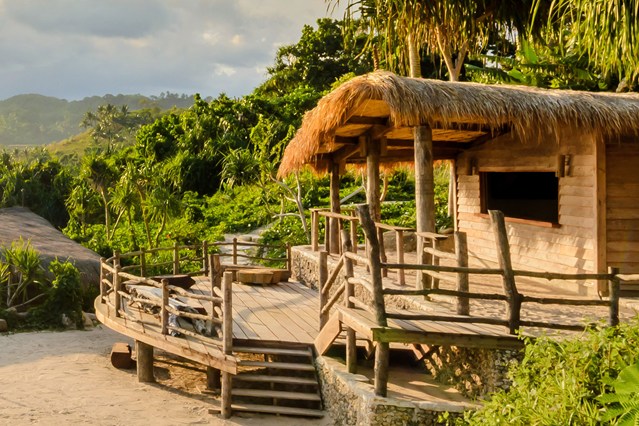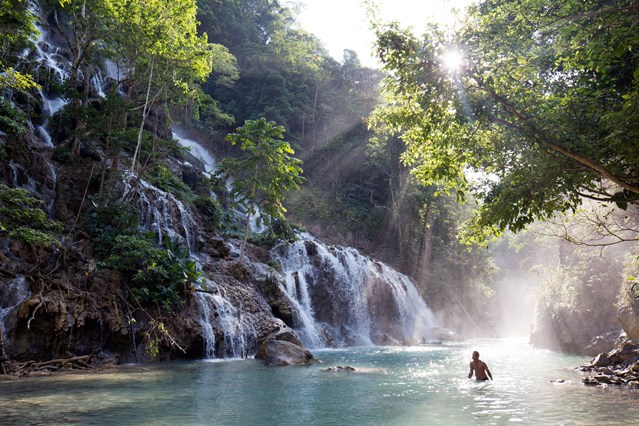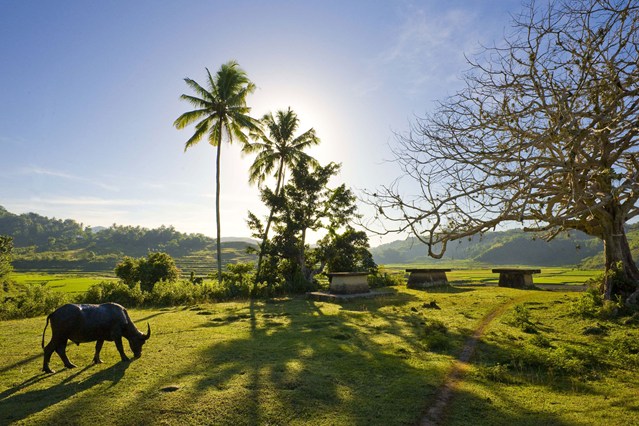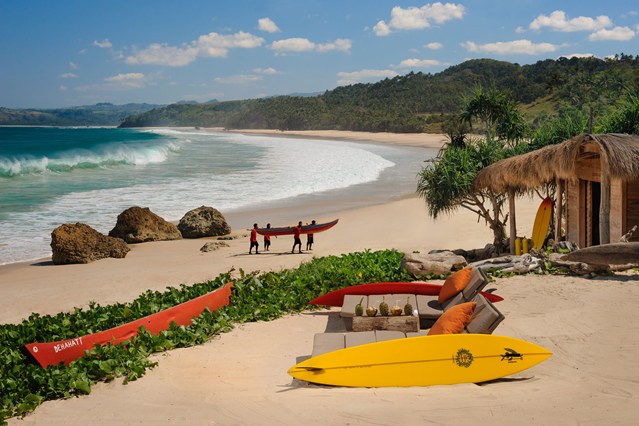Sumba is a dynamic mystery. With its rugged undulating savannah and low limestone hills knitted together with more maize and cassava than rice, physically it looks nothing like Indonesia’s volcanic islands to the north. Sprinkled throughout the countryside are hilltop villages with thatched clan houses clustered around megalithic tombs, where villagers claim to be Protestant but still pay homage to their indigenous marapu with bloody sacrificial rites. Throw in outstanding hand-spun, naturally dyed ikat, and the annual Pasola festival – where bareback horsemen ritualise old tribal conflicts as they battle one another with hand-carved spears – and it’s easy to see that Sumba runs deep. One of the poorest islands in Indonesia, an influx of welcome government investment has brought recent improvements in infrastructure – best seen in Tambolaka, the island’s newest city. And change has trickled down to traditional villages, as well. Thatched roofs are becoming tin, tombs are now made from concrete, traditional dress is increasingly rare, and remote villagers expect larger donations from visitors. Some traditions persist, however. Sumba’s extensive grasslands make it one of Indonesia’s leading horse-breeding islands. Horses still serve as a mode of transport in more rugged regions, they remain a symbol of wealth and status, and can still win a bride. – www.lonelyplanet.com




